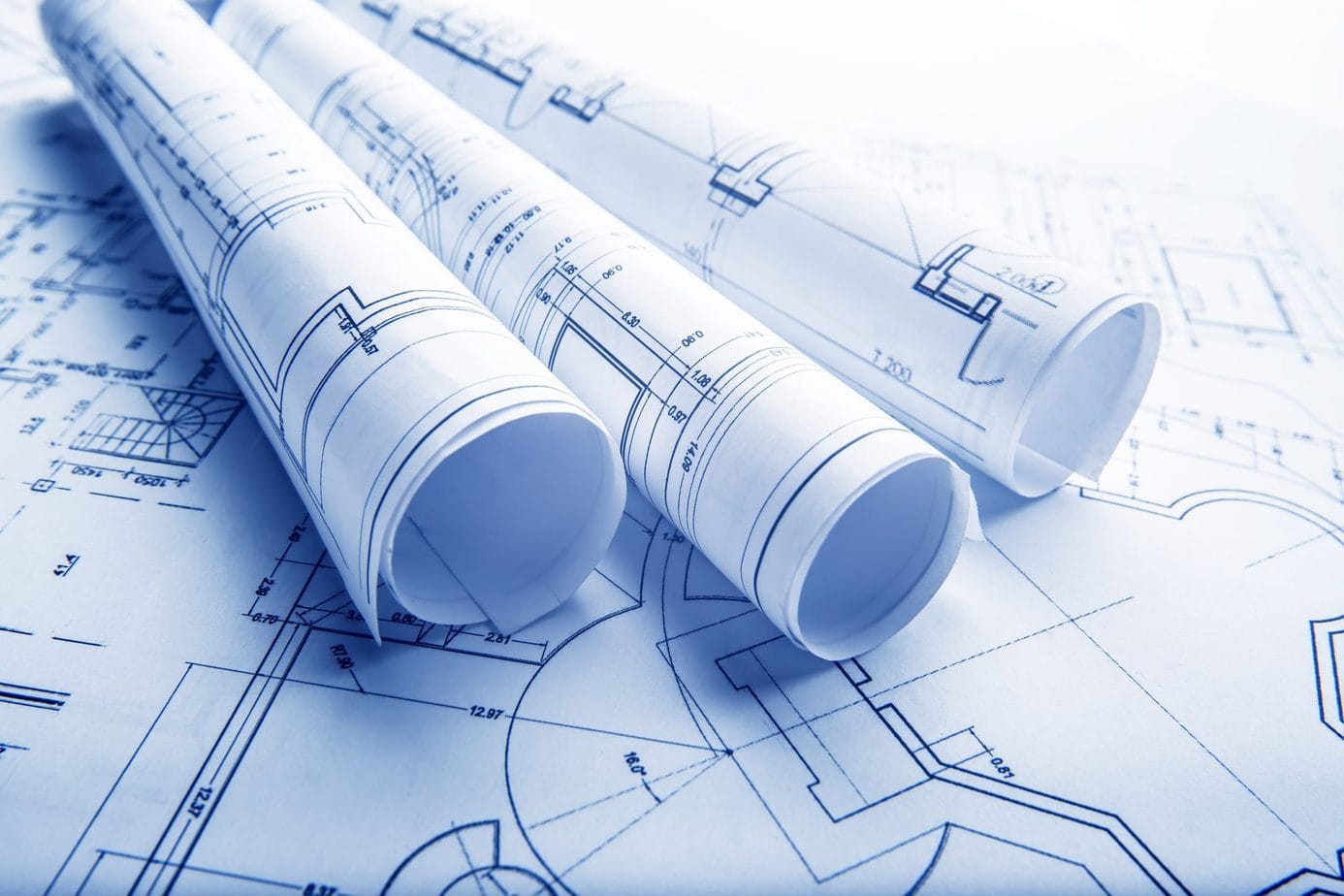Have you ever wondered why blueprints are called blueprints? The answer is surprisingly simple.
The first blueprint was developed in 1842 by John Herschel, an American chemist, astronomer and photographer. Herschel’s cyanotype blueprint process eliminated the cumbersomeness and expense of hand tracing original drawings. It also allowed rapid and accurate production of an unlimited number of copies of drawings.
The First Blueprints
The cyanotype process started with a drawing on semi-transparent paper that was weighted down on top of a sheet of paper. The drawing was then placed over another piece of paper, which was coated with a mix of ammonium iron citrate and potassium ferrocyanide (from an aqueous solution and then dried). When the two papers were exposed to light, the two chemicals reacted to form an insoluble blue compound called blue ferric ferrocyanide (also known as Prussian Blue), except where the blueprinting paper was covered and the light was blocked by the lines of the original drawing. After the paper was washed and dried to keep those lines from exposing, the result was a negative image of white (or whatever color the blueprint paper originally was) against a dark blue background.
The resulting image was therefore appropriately named “blueprint.”
Where Have all the Blueprints Gone?
By the 1890s, architectural firms found that blueprints were one-tenth of the cost of hand-traced reproductions and could be copied in a fraction of the time via the photochemical process developed by Herschel. However, the process is now obsolete.
In the 1940s, blueprints were replaced by diazo prints, aka “whiteprints” or “bluelines.” Diazo prints had blue lines on a white background. They were easier to read and faster to make than the original blueprints were. The process was simple. Moreover, the machines needed to make them were not overly expensive for reprographic companies and didn’t need extensive maintenance. For decades, bluelines were the way to make copies of engineering drawings. To this day, they are still often called “blueprints.” Other comparable dye-based prints were known as “blacklines.”
Diazo prints remained in use until they were replaced by xerographic print processes. Xerography is standard copy machine technology using toner on bond paper. In the mid-1970s, large-size xerography machines became available and ultimately replaced the older printing methods. As computer-aided design (CAD) techniques came into use, the designs were printed directly using a computer printer or plotter.
By the 1990s, digital drawings created via CAD went mainstream. Digital drawings were completed on powerful desktop computers and were saved to portable disk drives that were delivered to a plotter at a reprographics shop for black-and-white copies. Plotters were expensive and required specialized maintenance. As such, they were soon replaced by large digital printers.
Now, On-Screen Takeoff® software enables contractors to view plans, measure lengths and volumes, calculate new takeoff measurements and quantities with blazing speed and mark up plans on a computer screen. Plans are then digital and color-coded, so they can be emailed as PDFs to the job site without the printing of a single sheet of paper.
In the case of construction plans, such as road work or building erection, supervisors may view the “blueprints” directly on displays, rather than using printed paper sheets. These displays include mobile devices, such as smartphones or tablets. Software enables users to view and annotate electronic drawing files.
Many original paper blueprints are archived since they are still in use. In many situations, their conversion to digital format is prohibitively expensive, so most buildings and roads constructed before 1990 will have only paper blueprints, not digital. These original blueprints have significant importance to the repair and alteration of constructions still in use (e.g., bridges, buildings, sewer systems, roads, railroads, etc.). They are also used in legal matters concerning the determination of property boundaries.
The term “blueprint” is still used today in engineering circles, although with much less frequency than in the past. And the blueprint process is still used for special artistic and photographic effects on paper and on fabrics.








paper cuts and ammonia gas were a painful rick in late 1970’s
In 1959 my first engineering job required operating a “Peace Zepher” print machine. The developing process included loading liquid Ammonia into a heated tray that produced fumes that processed the paper coating into blue lines. During that time I inhaled a lot of fumes. at that time whenever anyone fainted it was common practice to break oped a glass ammonia vile and hold it under their nose. They usually came to after the first sniff. I often thought that if I ever passed out the Ammonia crystal would have no effect on me.
My very first task, at my first job as an engineer was to make blue line copies of a project drawings. The blue line machine was retired, along with the attendant chemicals immediately afterwards. Relegated to the junk heap. The next time we needed copies, I just went down to Kinko’s.
When I originally took drafting classes it was done all by hand. I guess I had a fair hand, good enough for an A. But because I attended school part time I was eventually required to take computer drafting before I could graduate. I wholeheartedly embraced CAD and became an expert.
Sir John Frederick William Herschel, 1st Baronet KH FRS (/ˈhɜːrʃəl, ˈhɛər-/;[2] 7 March 1792 – 11 May 1871)[1] was an English polymath active as a mathematician, astronomer, chemist, inventor, experimental photographer who invented the blueprint[3][4][5] and did botanical work.
Not American
great article as always! thank you PDHengineer.com